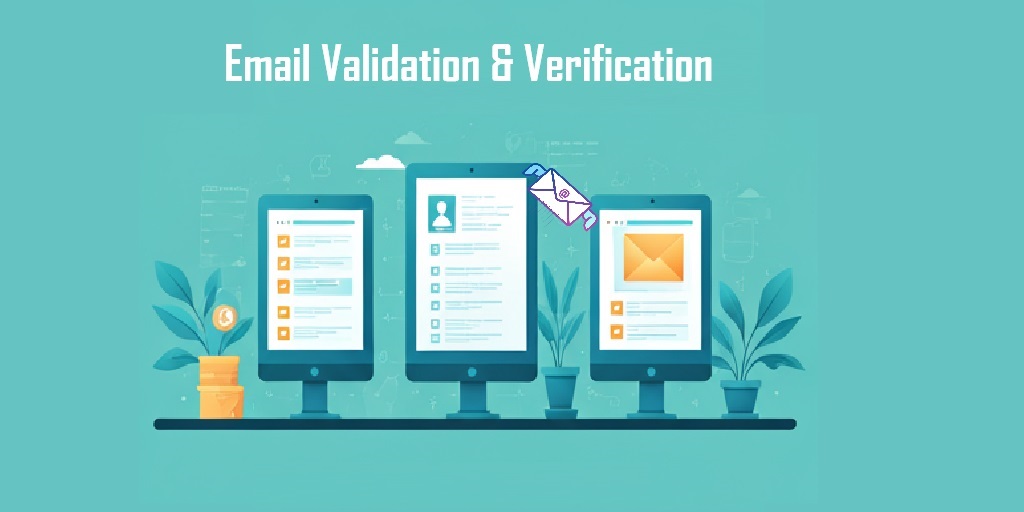
Email Validation & Verification: The Secret Sauce for Cleaner Lists and Higher Open Rates
Introduction
Imagine spending hours crafting the perfect email campaign, only to see it fall flat because half of your emails bounced or ended up in spam folders. Invalid email addresses can sabotage your marketing efforts, leading to low engagement, wasted resources, and a damaged sender reputation.
Enter email validation and verification—your secret weapons for cleaner lists and higher open rates. These processes ensure your emails land where they should, helping you maximize campaign success. Let’s dive into what they are, why they matter, and how you can use them to boost your email marketing game.
What is Email Validation and Verification?
Email Validation: This is the process of checking if an email address is correctly formatted and free from errors like typos (e.g., jonh@gnamil.com instead of john@gmail.com). It ensures the email looks valid at a basic level.
Email Verification: This takes validation a step further by confirming whether the email address exists and can receive messages. It checks the domain (e.g., @gmail.com) and pings the mail server to see if the email is active.
Difference in Action:
- Validation might tell you that
example@domain.conis invalid due to a typo. - Verification confirms whether
example@domain.comis an active and deliverable email address.
Why Email Validation and Verification Matter
- Reduce Bounce Rates: Invalid or inactive emails lead to bounces, which harm your sender reputation and may cause email platforms to flag you as spam.
- Improve Deliverability: Validated and verified emails ensure your messages reach active inboxes, increasing the chances of engagement.
- Boost Open and Click Rates: Cleaner lists with valid contacts result in higher open and click-through rates, driving better campaign ROI.
- Save Costs: Many email marketing platforms charge per email sent. Removing invalid emails saves you money.
- Avoid Spam Traps: Spam traps are fake emails designed to catch spammers. Verification helps identify and remove these addresses.
How to Validate and Verify Emails
a. Manual Methods
- Check Syntax: Look for obvious errors like missing “@” symbols or incorrect domain formats.
- Ping Email Servers: Use free tools to ping an email server and confirm whether the address exists.
- Cross-Reference Domains: Ensure the domain (e.g.,
@company.com) matches active websites or public records.
b. Automatic Methods
- Bulk Validation: Upload your email list to an automated tool for instant validation.
- Detailed Reporting: Get insights into valid, invalid, and risky emails.
- CRM Integration: Use tools that sync with your CRM or email platform for seamless verification.
Best Tools for Email Validation and Verification
a. Open Source Tools
- Email Verifier by Hunter.io: Ideal for small businesses and startups.
- Validators.io: Free and straightforward for quick checks.
- SimpleEmailVerifier: Lightweight tool for developers and tech-savvy users.
b. Paid Tools
- ZeroBounce: Known for accuracy and advanced reporting features.
- NeverBounce: Scalable for businesses of all sizes.
- Snov.io: Combines email verification with lead generation tools.
- BriteVerify: Great for validating emails in real-time during form submissions.
- Mailgun: Offers robust API-based email verification for developers.
- EmailListVerify: Affordable and efficient for bulk verification.
Comparison Table:
| Tool | Key Features | Pricing | Best For |
|---|---|---|---|
| ZeroBounce | Advanced reporting, API | From $16/month | Businesses, Enterprises |
| NeverBounce | Scalable, real-time validation | Pay-as-you-go | Marketers, Freelancers |
| Snov.io | Lead generation, CRM sync | Freemium | Sales Teams, Startups |
Tips for Effective Email Validation and Verification
- Validate at the Point of Collection: Use form validation to catch errors before emails are added to your list.
- Verify Regularly: Clean your list before every major campaign.
- Avoid Buying Lists: Purchased lists often contain invalid or spam trap emails.
- Combine with Hygiene Practices: Remove inactive subscribers and monitor engagement regularly.
How These Tools Benefit Email Marketers
- Enhanced Cold Outreach: Send personalized emails to active leads, increasing conversion rates.
- Optimized Campaigns: Focus on valid contacts for better performance metrics.
- Reduced Costs: Pay only for valid emails, saving money on email platforms.
Conclusion
Email validation and verification are the unsung heroes of successful email marketing campaigns. They ensure your messages reach the right people, protect your sender reputation, and drive better results.
Start validating and verifying your email lists today using tools like ZeroBounce or Hunter.io. It’s a small step that can make a huge difference in your marketing success.
Join Our Newsletter!
Get the latest email marketing insights & tools straight to your inbox with SalesData.in!
